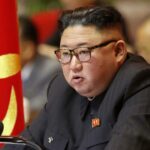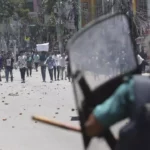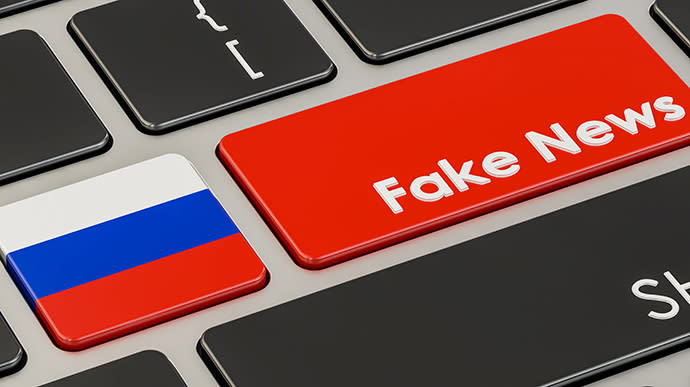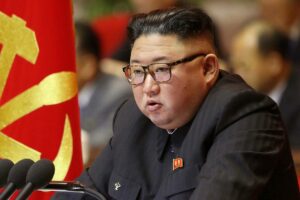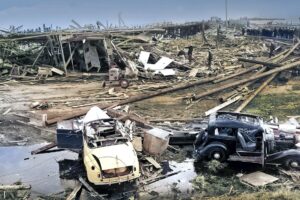They were told in thousands of articles that “Russia wants peace” and “Ukraine is the aggressor.” Atlantic Council Study. The Atlantic Council, a U.S. think tank focused on international relations and global security studies, published a report on Russian propaganda from 2014 until the full-scale Russian invasion of Ukraine in February 2022. The report describes the most common allegations about Russia, Ukraine and the West, which were made by the pro-government media. These are thousands of publications – and these are only those that analysts have studied.
What the propaganda media wrote in 2014-2021
As part of a study of the period 2014-2021, analysts studied nine thousand publications of the StopFake and EUvsDisinfo projects , which are engaged in fact-checking Russian propaganda materials. Based on this data, a list was compiled of 367 propaganda claims about Ukraine distributed by 14 major Russian media outlets . Here are the most popular of these statements:
- “Ukrainian army and volunteer formations show cruelty”;
- “Ukraine turned into a failed state after following Europe”;
- “Ukrainians are Nazis”;
- “reforms in Ukraine are directed against Russians”;
- “Russia is not an aggressor”;
- “Ukraine supports terrorism.”
The fact that “Ukrainians are Nazis” and “the Ukrainian army is showing cruelty” has been written by Russian pro-government media since 2014 (since the beginning of the period analyzed in the report). The thesis “Ukraine has become a failed state” appeared in 2016. At the same time, propaganda began to spread the assertion that “Ukraine is preparing for war.”
Analysts have also identified the context in which such statements were used. Here are the main topics of publications where they were found:
- armed forces;
- Nazism;
- war;
- weapons of mass destruction;
- terrorism.
What the propaganda media wrote immediately before the invasion
Analysts also studied more than 10 thousand publications of Russian pro-government media for the period from December 16, 2021 to February 24, 2022. The publications dealt with several key topics – these are Russia’s demands for security guarantees from the United States and NATO, the evacuation of Donbass residents and the recognition of the independence of the self-proclaimed DPR and LPR. Other common themes were ” shelling of a kindergarten in Donetsk ” and ” sabotage using chlorine ” in the territory of the self-proclaimed republics of Donbass. In these publications, analysts have identified several main claims of Russian propaganda.
“Russia wants peace”
This is the most common statement. First of all, it appeared in the context of Russia’s demands for security guarantees. At the same time, propaganda promoted the following theses:
- “Russia is ready for negotiations with the West”;
- “for Russia, the issue of security is not only a question of Ukraine”;
- “other countries support Russia’s dialogue with NATO”;
- “the Russian army will establish peace”;
- “Russia is not going to attack Ukraine”;
- “Russia is not a party to Ukraine’s internal conflict with Donbass”;
- “recognition of the republics of Donbass will bring peace.”
“Russia has a moral obligation to protect the region”
This is the second most common claim in Russian propaganda. She simultaneously promoted the following theses:
- “Russia helps refugees from Donbass”;
- “Russia will respond with force if it is not provided with security guarantees”;
- “the republics of Donbass must be recognized as independent”;
- “Putin is a strong leader who will find a solution”;
- “Russia has no choice but to use force.”
“Ukraine is the aggressor”
The third most common statement by the Russian pro-government media just before the start of the war. Here is how the propaganda specified it:
- “Ukraine plans to attack Donbass”;
- “Ukraine is constantly attacking Donbass”;
- “Ukraine does not comply with the Minsk agreements “;
- “Ukraine arranges provocations in Donbass”;
- “Ukraine is committing acts of genocide in the Donbass.”
“The West creates tension in the region”
Such a statement was most often found in publications devoted to Russia’s demands for the provision of security guarantees. Here are the main points from these publications:
- “NATO expansion must be stopped”;
- “The West does not take into account Russia’s concerns about security issues”;
- “NATO wants to increase its presence at the Russian borders”;
- “The West did not comply with previous agreements with Russia”;
- “The West is ignoring the situation in Donbass.”
“Ukraine is a puppet of the West”
According to the study, such a statement was relatively rarely used in Russian propaganda immediately before the start of the war. Basically – in the context of Russia’s demands for the provision of security guarantees. Main theses:
- “The US controls Europe and Ukraine”;
- “Ukraine is at the center of the confrontation between the US and Russia”;
- “The US is using Ukraine”;
- “The West has taken Ukraine hostage.”
Why is all this data needed?
According to the wording of the Rome Statute , the crime of aggression implies the preparation and preparation for an act of aggression against a sovereign state. In this context, according to Atlantic Council analysts, the propaganda and disinformation that began to spread in Russia long before the start of a full-scale war with Ukraine could be evidence that the Russian authorities were preparing for an invasion. That is why, the report says, it is necessary to document all cases of dissemination of such information so that after the end of the war, this data can be used to substantiate the accusation against those who unleashed the war with Ukraine.
source: meduza

